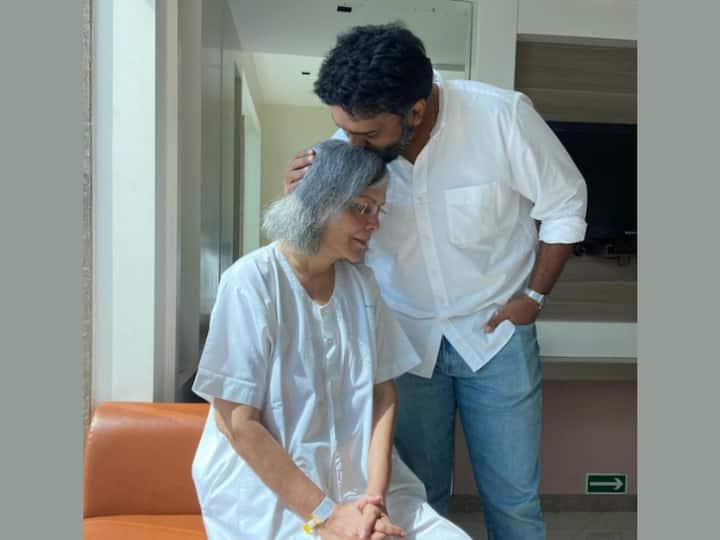Congenital disorders
What Is Ptosis? Know All About The Condition Zeenat Aman Has Been Suffering From
A few days back, Zeenat Aman took to Instagram and spoke out about her struggle with ptosis, or droopy eyelids. Her 40-year-long battle with a medical problem was finally resolved with surgery, as she disclosed in her long post.
Zeenat Aman acknowledged the fact that she had missed out on opportunities due to her ptosis condition. She wrote, “There has been an elephant in the room with me for the past 40 years. It is time to show this elephant the door. I have a condition know as ptosis – the result of an injury I suffered many decades ago that damaged the muscles around my right eye. Over the years, it caused my eyelid to droop further and further. And a few years ago it became so acute that it began to obstruct my vision.”
But, what is ptosis all about? To know more, ABP Live sought the opinion of experts who explained ptosis, talked about tis symptoms, treatment options and prevention.
What Is Ptosis?
Dr. Ashwin Santosh Shetty, who is a Consultant – Ophthalmology, at Aster CMI Hospital said, “Ptosis, also called blepharoptosis, is a condition in which the upper eyelid droops or falls over the eye. It can affect one or both eyelids, and it can range from mild to severe. If ignored, this can impair vision, and daily routine, and it can also cause cosmetic concerns. Congenital ptosis is the most common condition. However, acquired ptosis develops in the later stages of life and could be due to aging, muscle weakness, nerve damage, tumors, or eye injury some of the causes of this condition.”
In addition, Dr. Shruthi Tara, who is the CMO & Consultant-Oculoplasty, at Sankara Eye Hospital, Coimbatore said, “This condition can manifest in children from birth due to underdeveloped muscles responsible for maintaining the eyelid’s position. It can also occur in adults due to factors such as aging, trauma, post cataract and retina surgery, and occasionally in individuals who wear contact lenses. Additionally, certain neurological conditions can contribute to ptosis.”
Types Of Ptosis:
Dr. Mahabaleswar, who is anM D Ophthalmologist, at Apollo Clinic, Kormangala, Bengaluru said, “Ptosis can be congenital or acquired. Congenital Ptosis if causing visual problems needs to be corrected surgically by oculoplasty surgeons .Acquired Ptosis can be due to trauma or age related. Recently a prominent film person got treated surgically for traumatic Ptosis. Medical conditions like myasthenia Gravis cause diurnal Ptosis. Means Ptosis is progressive during day and disappears with rest.This condition is treated medically.Investigation for tymoma a chest tumor is needed .some medications can cause symptomatic ptosis. A well known film star briefly had this condition.”
Symptoms Of Ptosis:
The main symptom of the condition as stated by Dr. Ashwin is a drooping of the upper eyelid. In a few cases, the eyelid may droop so much that it covers the pupil, which can impair vision. Other symptoms of ptosis may include: titled head, double vision, tiredness, and headaches.
Ptosis: Prevention
Talking about prevention, Dr. Preeti Chaudhari, who is a Consultant – Ophthalmology, at SRV Hospitals – Dombivili said, “Nerve damage, whether due to injury or other factors affecting the nerves controlling eyelid muscles, can also result in ptosis. Additionally, certain neurological disorders, such as Horner’s syndrome, myasthenia gravis, or third nerve palsy, can contribute to ptosis. Trauma or physical injuries to the eye area or eyelid can cause ptosis, while the presence of eyelid tumors or growths on or around the eyelid may weigh it down. Systemic diseases like diabetes or thyroid disorders are known to be associated with ptosis. Medications, especially those affecting muscle function, can lead to ptosis as a side effect, and infections or inflammation of the eyelid or surrounding tissues may also cause ptosis.”
Treatment And Cure:
Dr. Sujal Shah, who is the Director of Ophthalmology at Sir HN Reliance Foundation Hospital, Mumbai listed the options for cure of ptosis:
- Congenital ptosis- Surgical management is the only choice (Levator muscle resection)
- Mechanical ptosis- Treatment of the underlying cause
- Aponeurotic ptosis- Surgical management includes levator resection , advancement with reinsertion or anterior levator repair
- Neurogenic ptosis- Surgical management includes levator disinsertion and brow suspension
[Disclaimer: The information provided in the article, including treatment suggestions shared by doctors, is intended for general informational purposes only. It is not a substitute for professional medical advice, diagnosis, or treatment. Always seek the advice of your physician or other qualified healthcare provider with any questions you may have regarding a medical condition.]
Check out below Health Tools-
Calculate Your Body Mass Index ( BMI )
Calculate The Age Through Age Calculator

